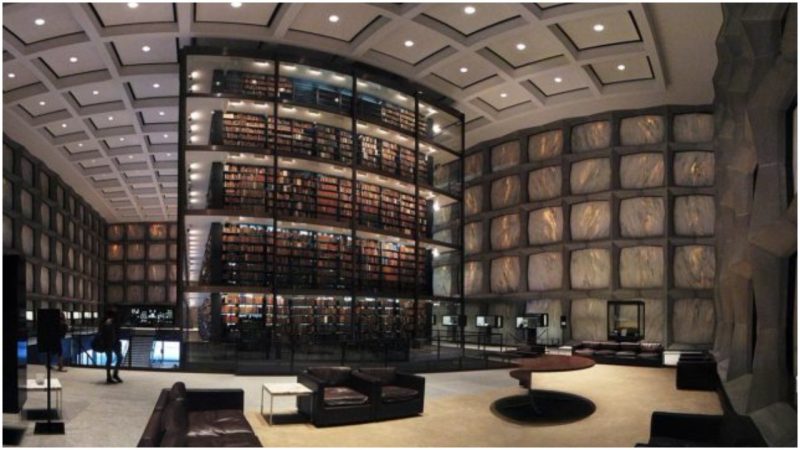Libraries are a place where bookworms can get lost in time and space. For centuries, their role in society has been of crucial importance for scholarship and knowledge. It is with the utmost care that the most precious of our libraries are designed, keeping in mind how their treasured items will be preserved for the future generations.
In ancient times, the Library of Alexandria was perhaps the most prominent library of all, considered the “birthplace of the modern world.” We almost cannot imagine the loss of such a library, hardly aware of the effort put into creating it and the rare books it once held.
In modern day, the world is unimaginable without the 300-year-old Library of Trinity College in Dublin for example, which houses roughly 200,000 books, including the Book of Kells. Nor can we envision a society without the Clementinum in the Czech Republic, which is considered to be the most beautiful library in the world. Such is also the case of the Beinecke Rare Book and Manuscript Library in the United States, dubbed the “jewel box” or as the “laboratory for the humanities.”
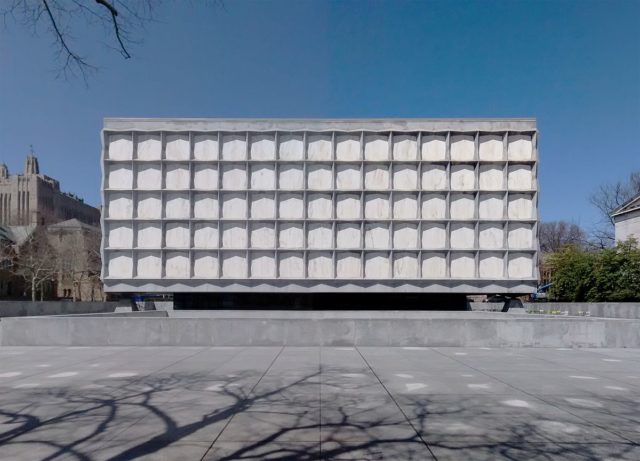
Built in 1963, the library belongs to Yale University, located in New Haven, Connecticut. On a sunny day, its unique exterior seems to be floating above its darkened ground entry level. The modernist edifice houses a rich rare book library and literary archive, and it was established as a gift from the Beinecke family. Having provided its own funding, the library is financially independent of the university. It is, nevertheless, co-governed by the University Library and the Yale Corporation.
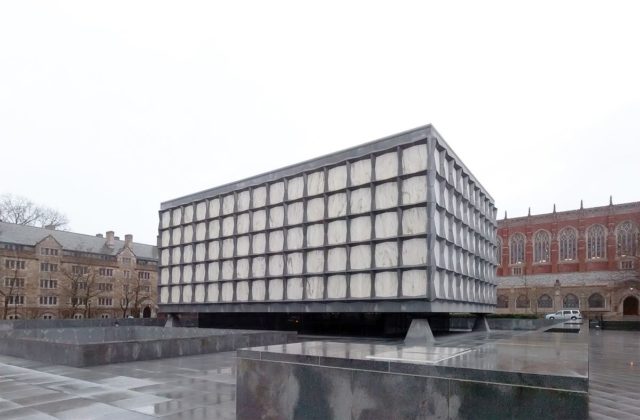
The six-story building that unravels above the ground is surrounded by a rectangular outer shell that has no windows. While four bulky piers at each of the corners hold the structure, the library also descends 50 feet below ground to bedrock.
The library’s outer walls are made entirely of translucent marble panels. They are able to let in only dim light from outside, assuring that the treasured items inside are well protected from direct sunlight. During the night, the same panels allow light from inside to transform the building’s exterior with an amber glow.
The building’s outer dimensions bear a splendid mathematical proportion, that of a 1:2:3 ratio of height, width, and length. Inside the edifice, furniture designed by the famous American architect and designer Florence Knoll adds to the room.
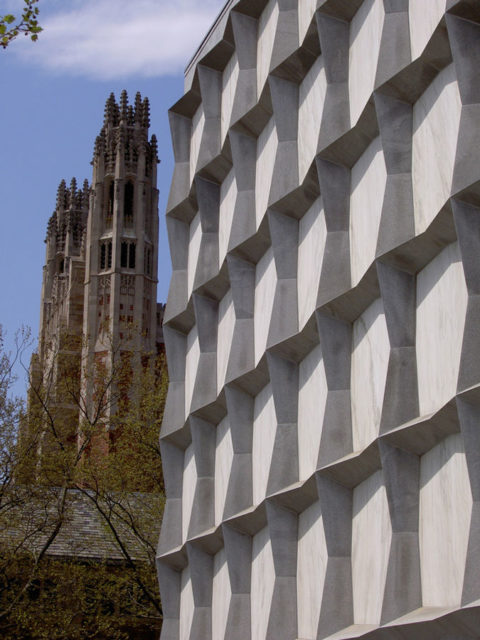
A public exhibition hall is one of the features of the building, where visitors can see some of the library’s most precious gems, its extant copies of the Gutenberg Bible. That book began the Gutenberg Revolution in Europe, marking the dawn of printed books in the Western world.
The Hewitt Quadrangle, home of the university’s administration and major auditorium, was there before the library was built. From 1901 to 1917, the Quadrangle was known as the University Court; once the Beinecke Library was completed, it expanded with two basement floors, which made more room for the library.
One of the floors now features a garden of abstract allegorical sculptures by Isamu Noguchi. There, a pyramid represents the time, the sun represents the disc, and a cube represents the chance.
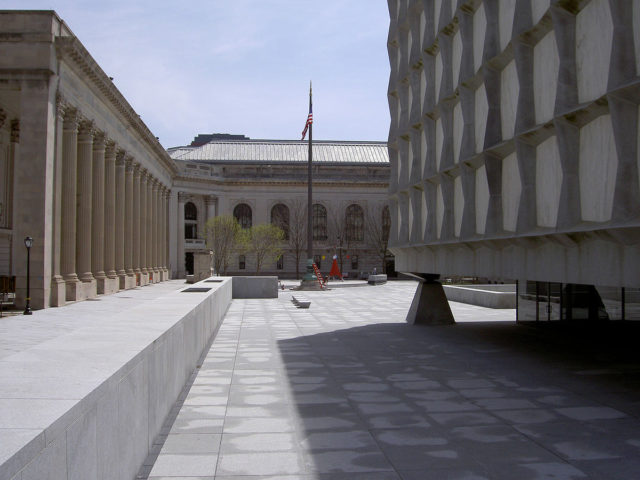
Nowadays, the Beinecke is one of the largest buildings in the world dedicated to keeping rare books and manuscripts. The central building alone houses 180,000 volumes, while over 600,000 more are stored in the underground departments. More books of the library can be found at Yale University’s Library Shelving Faculty. The entire collection of Beinecke is estimated to be roughly a million volumes, and several million manuscripts.
The history of the library traces back to the late 19th century, as soon as the first copies of rare and valuable books of the Library of Yale College were placed with caution on distinct shelves at the College Library, currently known as Dwight Hall.
In 1918, the university obtained funding to create a dedicated reading room for its rare books, which was opened in 1930. The Yale English professor Chauncey Brewster Tinker is acknowledged for collecting many monumental works along with Yale alumni.
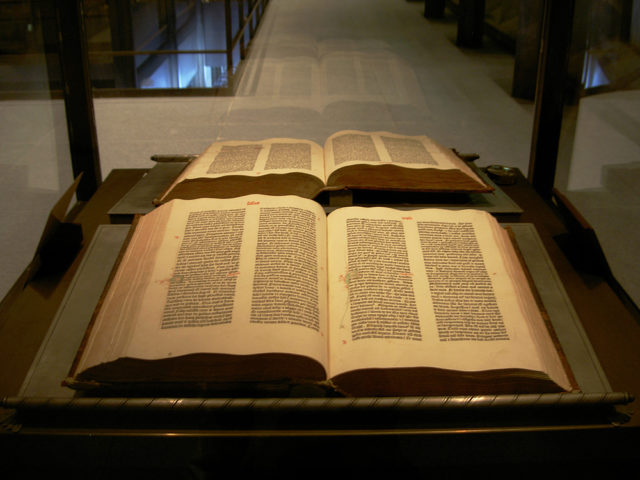
By the end of the 1960s, the collection already numbered more than 130,000 rare volumes and even more manuscripts. Having already provided invaluable contributions to Yale by then, Edwin and Frederick Beinecke, as well as Johanna Weigle, were major benefactors in building the contemporary library.
What bookworms can look see in the Beinecke Library today is simply mesmerizing. There is the astounding book collection gifted by King George III, referred to as the King’s Library, as well as some of the best collections of American and German literature.

The Beinecke eventually became a repository for various collections, such as books printed across Latin America before 1751, or North America before 1821, but that’s just a tiny portion of all that lurks behind the walls.
Related story from us: Bookmobiles – Now a thing of the past
Among the ancient papyri and medieval manuscripts, scholars can come across personal notes of modern writers, too. Like any other vast and grandiose library in the world, it may take several lifetimes to make sure all the admired books are read or at least taken out from the bookshelves.
